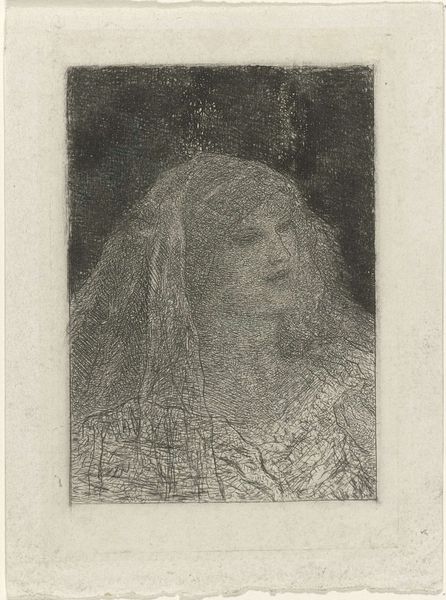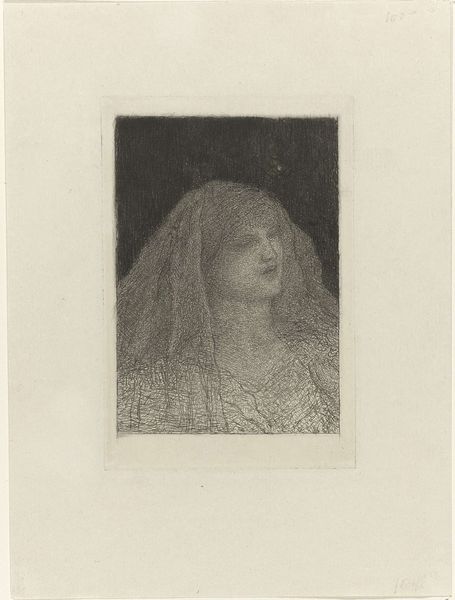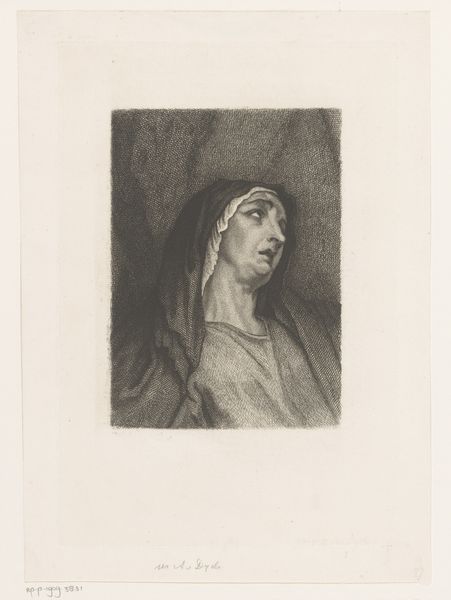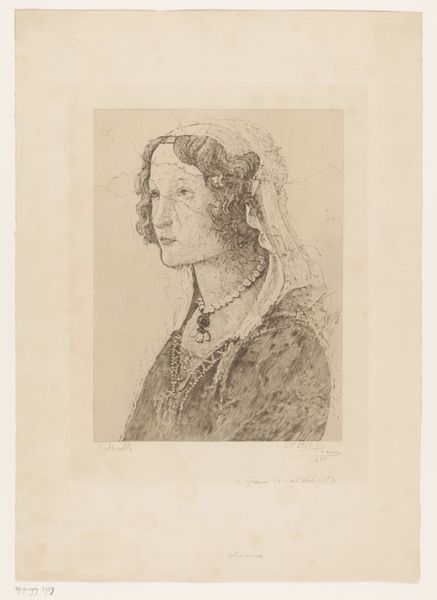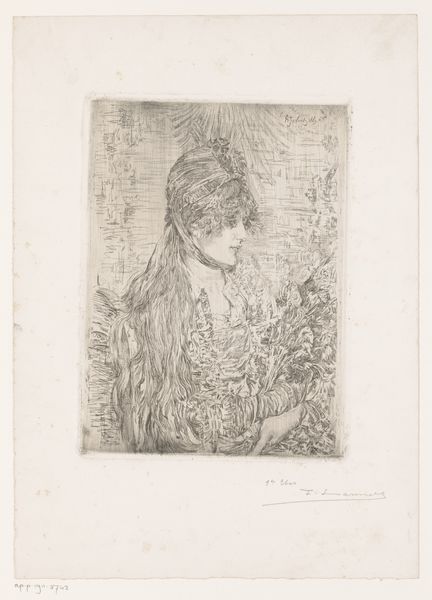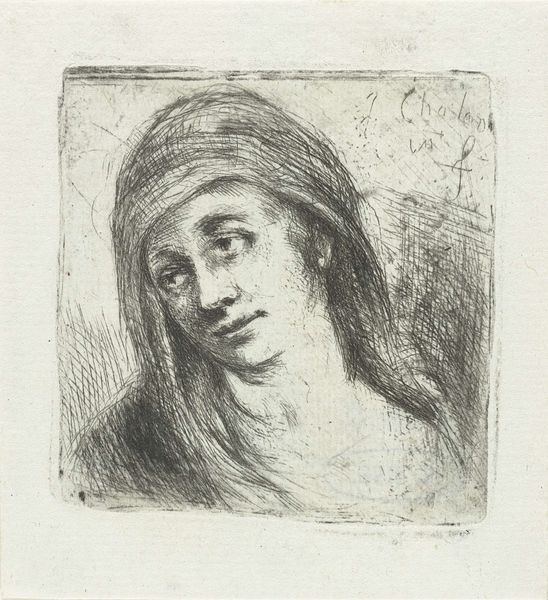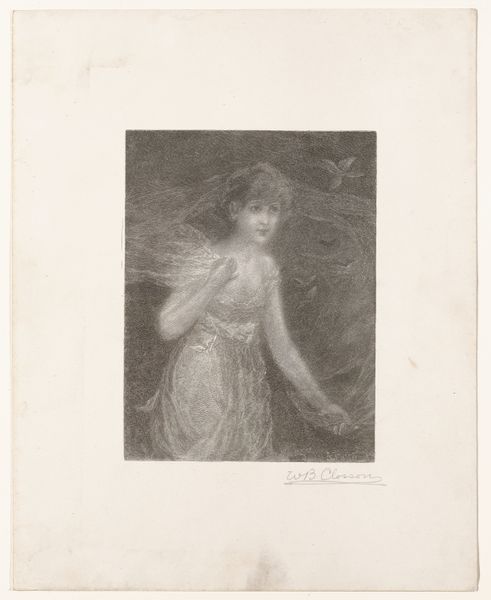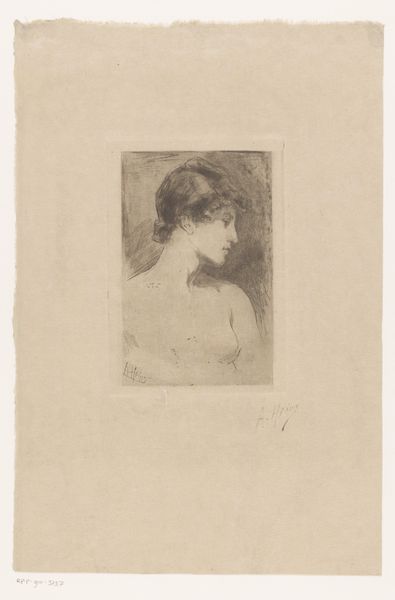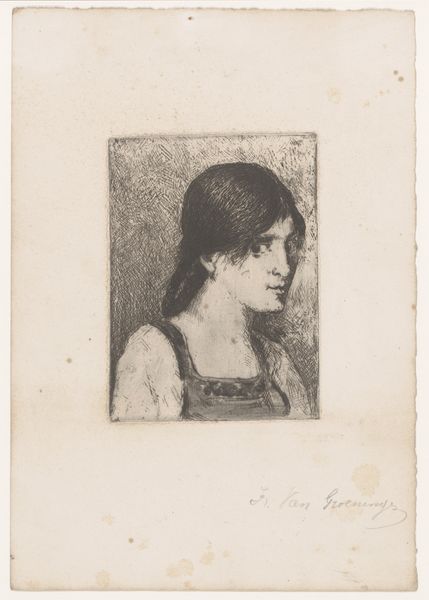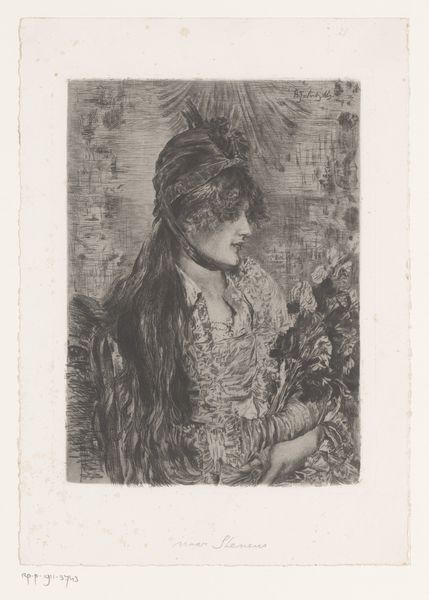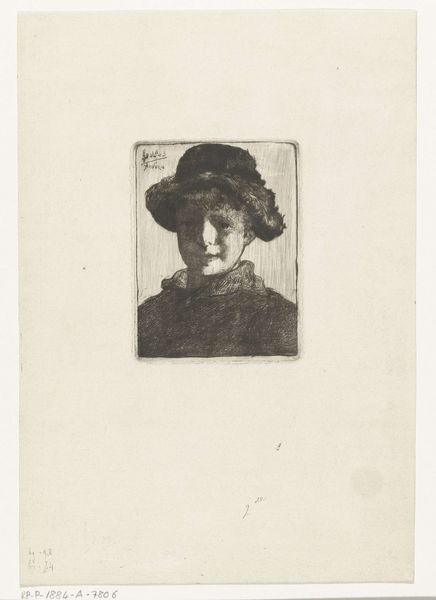
drawing, etching, intaglio
#
portrait
#
pencil drawn
#
drawing
#
etching
#
intaglio
#
pencil drawing
#
symbolism
Dimensions: height 118 mm, width 79 mm
Copyright: Rijks Museum: Open Domain
Editor: This etching by Matthijs Maris, "Woman with a Veil," from the early 1880s, is incredibly evocative. I'm immediately struck by the way the veil obscures and softens her features, creating a sense of mystery. What do you see in this piece from a historical perspective? Curator: I see a powerful representation of the late 19th-century artistic engagement with interiority and symbolism, particularly relevant given the evolving social roles of women at the time. The veil itself acts as a potent symbol. Consider: what did veiling typically signify in that era, both publicly and privately? Editor: I guess it could signify mourning, religious devotion, or simply privacy, right? Was Maris making a comment on the limited roles available to women? Curator: Exactly. Now, Maris wasn't explicitly political, but his work resonates within the broader societal context. Think about the rise of artistic movements like Aestheticism and Symbolism; they privileged feeling and subjective experience over objective reality. Does this resonate with Maris's style here? Editor: Yes, definitely. It's less about capturing a literal likeness and more about conveying a mood, an inner state. It feels like she's hidden, but also vulnerable. Curator: Precisely! Furthermore, museums themselves played a role in shaping the reception of such images. Displaying such works elevated them to objects of public contemplation, encouraging viewers to analyze and interpret female subjectivity, regardless of the artist’s intentions. Do you think that changes how we perceive the artwork now? Editor: Absolutely, it does. Knowing that it was deliberately put on display encourages the audience to consider that more. This conversation has totally changed my understanding of this etching. I went from seeing a beautiful image to recognizing the historical and social complexities behind it. Curator: And that is, I believe, the enduring power of art history. It teaches us that images are never neutral; they are always embedded in broader webs of meaning and power.
Comments
No comments
Be the first to comment and join the conversation on the ultimate creative platform.
